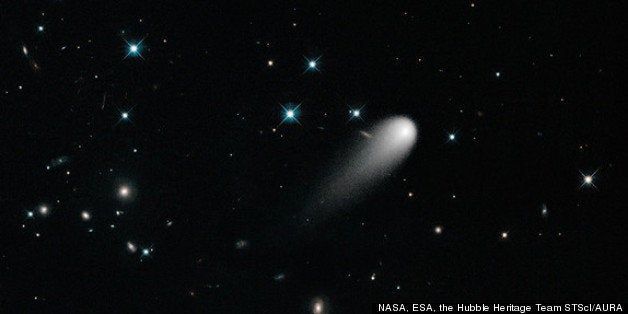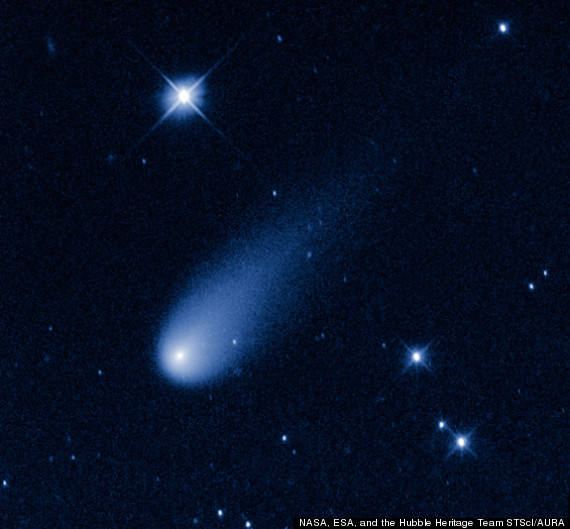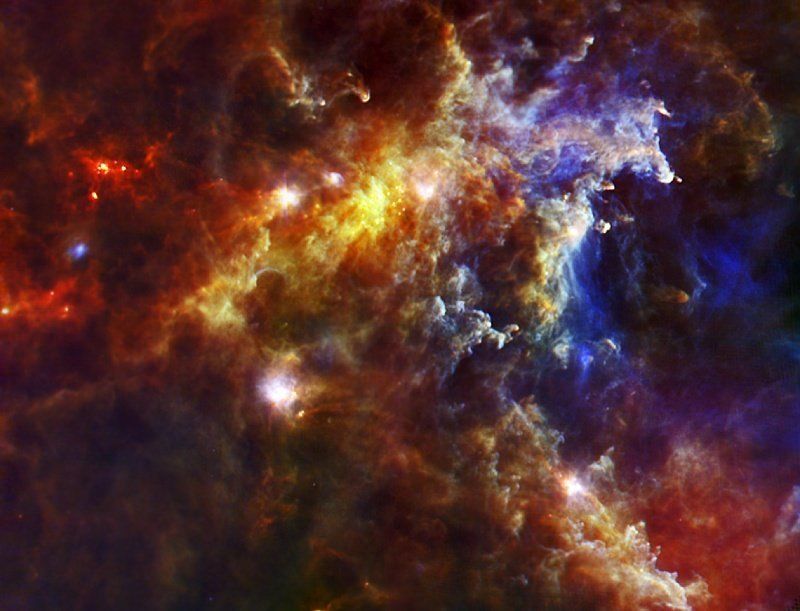
It doesn't look like Comet ISON will live up to the considerable hype, one researcher says.
ISON has been billed as a potential "comet of the century," with some experts saying it could blaze as brightly as the full moon around the time of its close solar approach in late November. But the comet's recent behavior suggests that such a dazzling show is not in the cards, says astronomer Ignacio Ferrín of the University of Antioquia in Medellín, Colombia.
"Comet ISON has presented a peculiar behavior," Ferrín said in a statement Monday (July 29). "The light curve has exhibited a 'slowdown event' characterized by a constant brightness, with no indication of a brightness increase tendency. This slowdown took place around January 13th, 2013. For 132 days after that date and up to the last available observation, the brightness has remained constant." [Photos of Comet ISON: A Potentially Great Comet]
 The Hubble Space Telescope captured this view of Comet ISON, C/2012 S1 (ISON), on May 8, 2013 as it streaked between the orbits of Jupiter and Mars at a speed of about 48,000 mph.
The Hubble Space Telescope captured this view of Comet ISON, C/2012 S1 (ISON), on May 8, 2013 as it streaked between the orbits of Jupiter and Mars at a speed of about 48,000 mph.
Comet ISON's recent performance has a precedent that's not terribly encouraging. In 2003, Comet C/2002 O4 Hönig exhibited a brightness plateau for 52 days and then disintegrated, Ferrín noted.
"The future of Comet ISON does not look bright," he said.
Comet ISON is slated to skim just 724,000 miles (1.16 million kilometers) above the surface of the sun on Nov. 28. Thus far, most scientists have been hedging their bets about the icy wanderer's performance. It's difficult to predict how any comet will behave during a close solar passage, they say, and especially tough to do so for "dynamically new" comets like ISON that are making their first trip to the inner solar system from the frigid, distant Oort Cloud.
The forecast could start firming up a bit soon, however. Comet ISON — whose nucleus is thought to be just 3 to 4 miles (4.8 to 6.5 km) wide — is slated to cross the "frost line" within the next few weeks, scientists say.
This boundary, which lies about 230 to 280 million miles (370 to 450 million km) from the sun, marks the point at which ISON's water ice will start boiling off into space. (Until now, most of its activity has been driven by sublimating carbon dioxide.)
ISON should brighten as it crosses the frost line, and scientists and skywatchers should get a better idea of how tough the comet is, researchers say. Some inbound comets haven't survived their trip past the frost line.
Comet ISON was discovered last September by amateur astronomers Vitali Nevski and Artyom Novichonok. It takes its name from the equipment the duo used — the International Scientific Optical Network (ISON) near Kislovodsk, Russia.
Skywatchers aren't the only people eagerly tracking ISON's journey toward the sun. NASA has organized a coordinated observation campaign enlisting many instruments on the ground and in space. The goal is to learn more about Comet ISON's composition, which could in turn reveal insights about the early days of the solar system.
Editor's note: If you snap a photo of Comet ISON or any other amazing night sky object and you'd like to share it for a possible story or image gallery, please send images, comments and details to managing editor Tariq Malik at spacephotos@space.com.
Follow Mike Wall on Twitter @michaeldwall and Google+. Follow us @Spacedotcom, Facebook or Google+. Originally published on SPACE.com.
